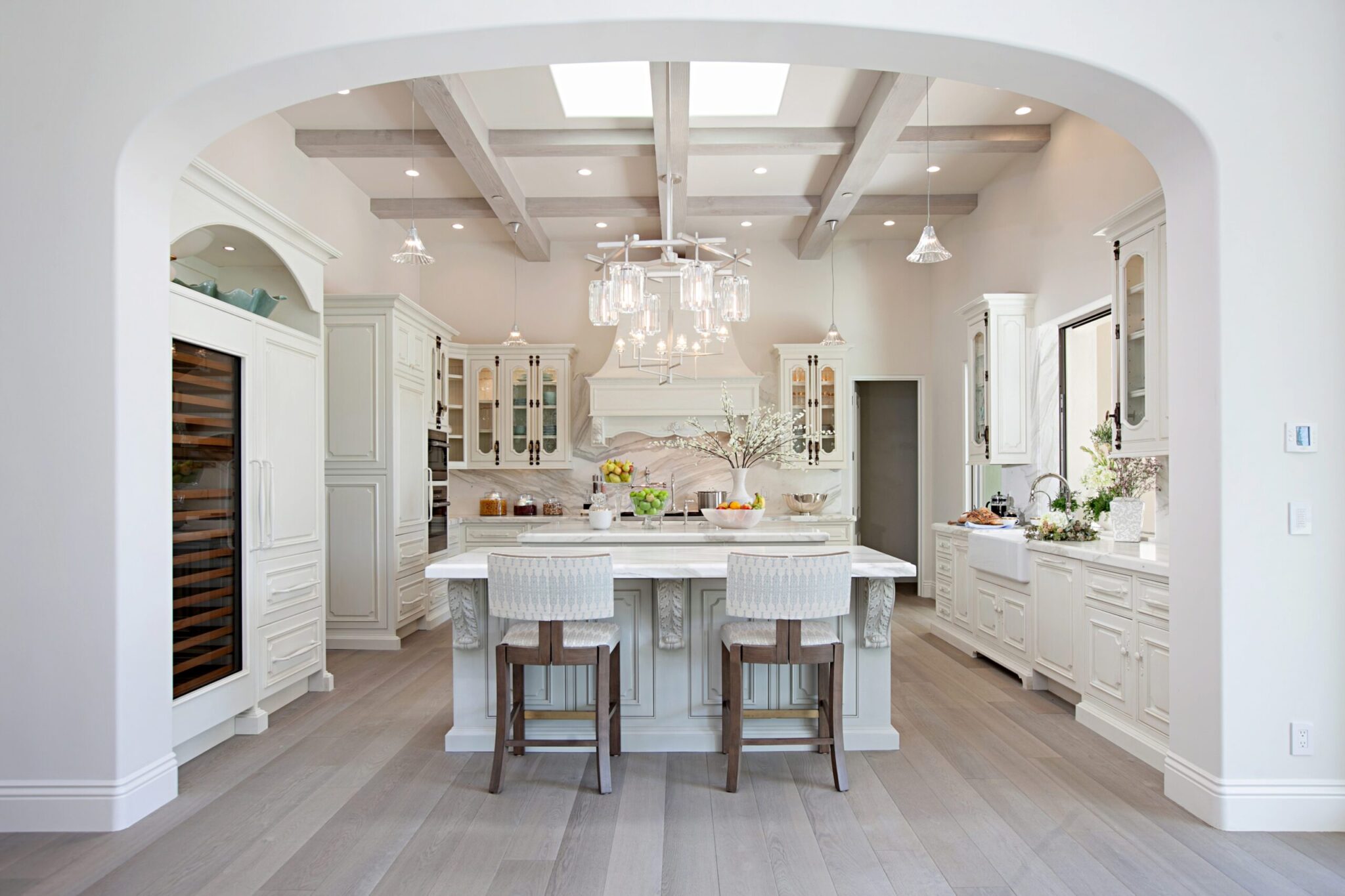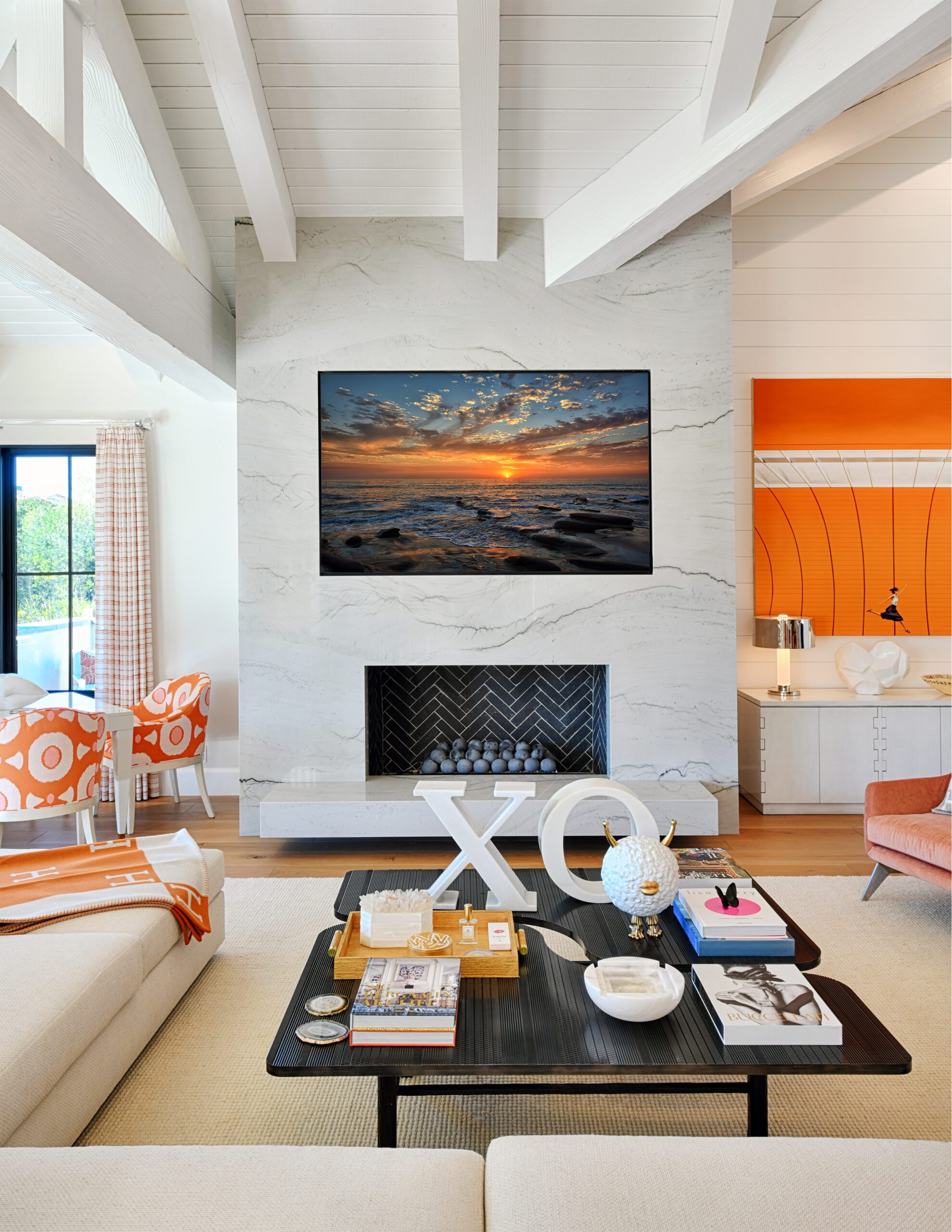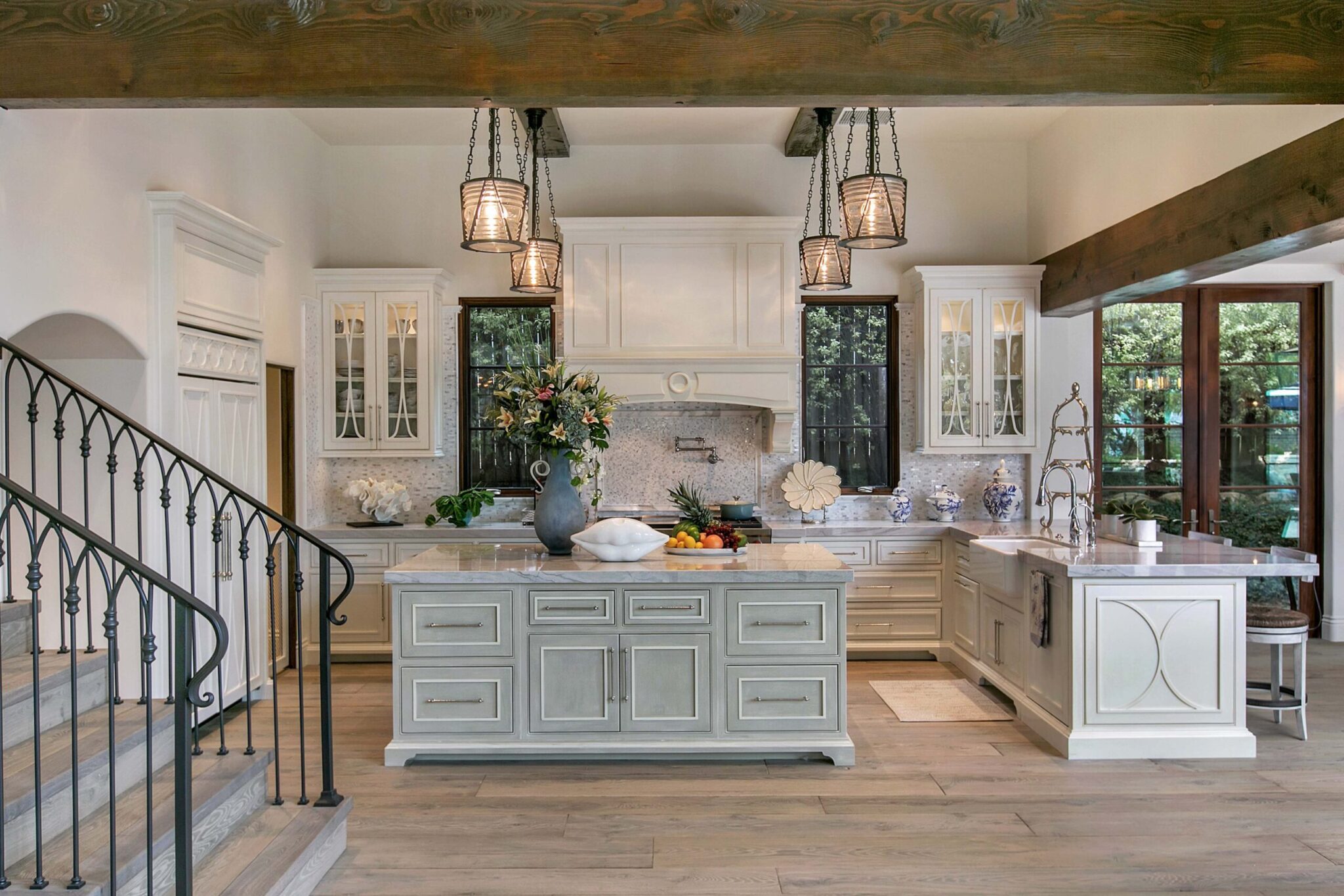Design Intelligence Over Unlimited Spend
Luxury isn’t about excess—it’s about intention. The most sophisticated interiors are not those with the highest price tags, but those that reflect careful prioritization and tailored investment. Thoughtful design begins with understanding where your money delivers the greatest aesthetic and functional return.
Refined homes are built on restraint and discernment. A strategic approach to budgeting allows homeowners to curate spaces that feel elevated without the need for overindulgence. It’s not about doing everything—it’s about doing the right things well.
Principle #1: Invest in High-Impact, High-Traffic Spaces
Kitchens: The Emotional and Functional Center of the Home
The kitchen is the heartbeat of the house—a space where utility and emotion intersect. From morning rituals to evening gatherings, it frames daily life. Buyers often judge a property by the quality of its kitchen, making it a wise area for investment.
Prioritize built-to-last cabinetry, premium countertops like quartzite or marble, layered lighting, and top-tier appliances. These elements shape both the visual rhythm and performance of the space. Savings can be found in open shelving, hardware swaps, or by selecting mid-tier bar stools and styling accessories.
Primary Bedrooms: Personal Retreats with Lasting Value
This is where peace meets privacy. A well-designed primary bedroom promotes rest and renewal. High-quality bedding, layered window treatments, and integrated storage systems deliver both serenity and utility.
Consider dimmable sconces, linen or wool textiles, and sound-dampening drapery. These components foster a retreat-like feel. Economize with ready-made nightstands or minimalist accent furniture that doesn’t distract from the room’s core tranquility.
Living Rooms: Hospitality Meets Everyday Comfort
The living room must balance beauty with function. It’s where families gather and guests are entertained. Invest in the sofa—it anchors the room. Add depth through wool rugs, sculptural lighting, and built-in storage or display walls.
Save on interchangeable elements: accent chairs, occasional tables, and styled décor can be sourced affordably or updated seasonally. Prioritize cohesion over cost.
Principle #2: Economize Gracefully in Secondary Spaces
Guest Rooms and Powder Baths
Secondary spaces should still feel considered, even if they don’t command large budgets. Use ready-made furnishings, affordable-but-elegant light fixtures, and paint to infuse personality. Add framed art prints or a bold mirror to make a guest room feel curated.
Powder rooms are ideal for design experimentation. A striking wallpaper or bold tile can deliver impact without the square footage—or cost—of a larger room.
Home Offices or Kids’ Rooms
Flexibility is key in these evolving spaces. Choose adaptable furnishings like modular desks or adjustable storage. Keep the finishes simple but use styling—shelving, lighting, color—to create intention.
Use easily updated elements to allow the room to evolve with its occupant. Rugs, drapery, and decorative objects can reflect changing tastes without overhauling the core layout.
Transitional Areas: Hallways, Mudrooms, Closets
These pass-through spaces can be polished without requiring a premium budget. Use the same paint as adjacent rooms for cohesion. Add simple sconces or LED strips to elevate function.
Built-in benches, shaker pegs, and woven baskets offer form and function without the need for custom cabinetry.
Principle #3: Align Budget With Lifestyle
Every Family Uses a Home Differently
Budgeting should be driven by behavior. Families who entertain regularly will benefit from investing in open-plan layouts, indoor-outdoor flow, and hospitality-ready dining. Others may value privacy, calm, or spaces for remote work.
At Kern & Co., we begin with lifestyle mapping—what your days look like, how you use space, and what your home should support. Design must serve life.
Daily Rituals Deserve Beautiful Backdrops
The small moments matter. Think about your morning coffee, your evening bath, your weekend reading chair. Elevating these rituals with thoughtful design has a profound impact on wellness.
A quiet breakfast nook, a walk-in shower with spa finishes, or a view-framing window seat can be the best return on investment—emotionally and practically.
Principle #4: Blend Custom and Off-the-Shelf Intelligently
When Customization is Worth the Cost
Custom elements solve problems off-the-rack pieces can’t. Millwork, built-ins, and tailored window treatments bring cohesion and permanence. In oddly shaped rooms or areas with storage demands, bespoke design creates harmony.
Multifunctional pieces—banquettes with hidden storage, cabinetry with integrated desks—maximize usability without compromising aesthetics.
When Retail Solutions Shine
Not everything needs to be built from scratch. Decorative mirrors, consoles, bookcases, and bar carts can often be sourced from retail vendors and enhanced with styling. Modify dimensions or add custom pulls for a bespoke look.
Savvy design mixes custom with curated retail, creating balance without blowing the budget.
Principle #5: Know What Affects Resale—and What Doesn’t
Kitchens and Bathrooms Lead in ROI
If resale is a consideration, these rooms matter most. Choose finishes with enduring appeal—subway tile, natural stone, warm woods. Avoid highly personal color schemes or trends in permanent installations.
Functionality is key. Soft-close drawers, ample storage, and lighting layers elevate both usability and value.
Lighting and Flooring as Universal Value Drivers
Flooring and lighting are sensory experiences—they set tone immediately. Durable wood or quality engineered planks make an impact underfoot. Beautiful lighting does more than illuminate; it sculpts the room.
Both features endure through multiple style cycles, making them worth the spend.
When to Ignore Resale for Personal Joy
Not every design decision needs to be resale-safe. Some spaces are for you, not the market. A moody dining room, a jewel-toned study, or a bold powder room can deliver emotional ROI that outweighs future concerns.
Balance timeless investments with personal indulgences—especially in spaces that reflect your identity.
Smart Spending Tips
Budgeting in Phases
Not every project has to happen all at once. A phased approach allows you to allocate resources intelligently over time. Begin with priority rooms, then build out with cohesion.
This reduces stress, allows for lifestyle adjustments, and avoids rushed decisions that may not serve the long-term vision.
Design-Led Procurement
Designers have access to trade pricing, sample sales, and exclusive vendors. More importantly, they know where to invest and where to save—avoiding costly missteps or misaligned purchases.
Let your designer guide selections with sourcing knowledge and logistical strategy.
Prioritize Quality Over Quantity
A few beautifully made items always outperform a collection of middling ones. Choose craftsmanship, comfort, and longevity over sheer volume.
In interior design, less but better will always feel more luxurious.
Luxury Is a Matter of Priority, Not Price Tag
True luxury is about intentionality—not expense. Strategic spending delivers more satisfaction than indiscriminate indulgence. Prioritize where quality will be seen, felt, and lived.
Kern & Co. helps homeowners navigate these decisions with clarity and confidence, creating homes that are tailored, timeless, and attuned to real life.
Let us show you how to turn a smart budget into a stunning result.
Frequently Asked Questions
How do I prioritize my budget in an interior design project?
Focus on high-traffic, high-impact spaces first, and assign funds where quality will be most felt daily—like the kitchen, bedroom, and living room. Plan in phases if needed to maintain consistency and avoid sacrificing core quality.
Which rooms should I invest in the most for resale value?
Kitchens and bathrooms consistently offer the highest return. Lighting, flooring, and custom millwork also add lasting appeal. Prioritize function and timeless materials in these zones. These rooms shape buyer perception and provide a tangible sense of quality and care.
Can I still achieve a luxury feel on a modest budget?
Absolutely. Prioritize select upgrades, blend custom and ready-made pieces, and use a designer’s expertise to source efficiently. Focus on proportion, texture, and cohesion to elevate your space without overspending. Even small details, when done thoughtfully, can create a sense of polish and refinement.



